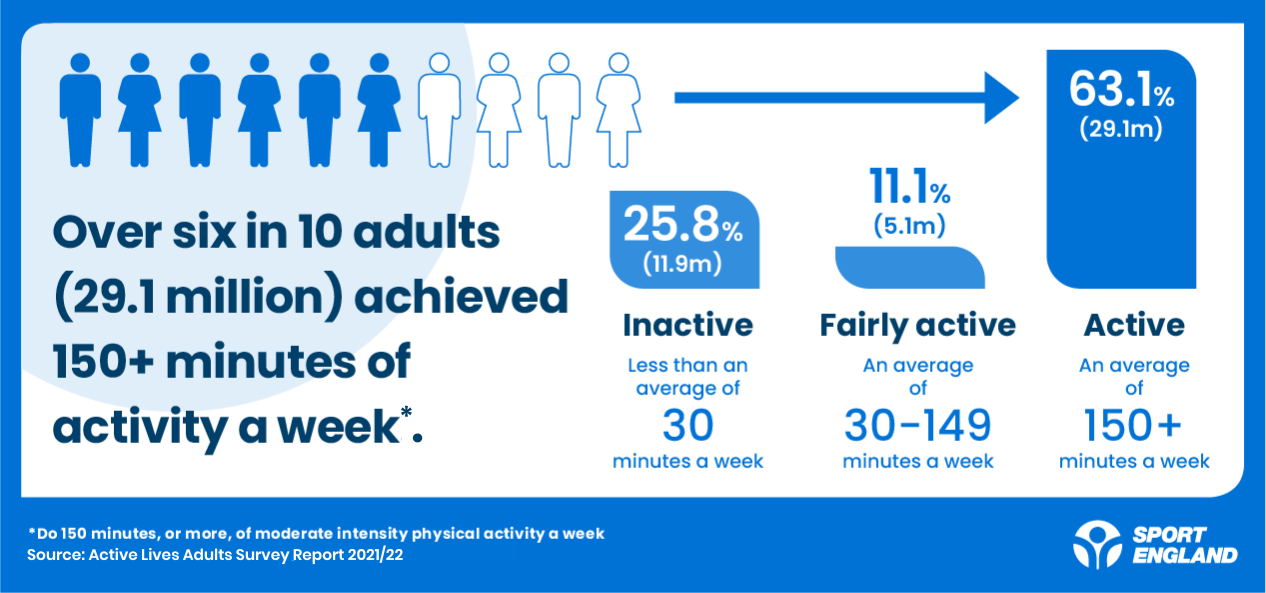Your Active Voice
Take our survey for the Lincolnshire sport and physical activity sector

Sport England have published the latest Active Lives Adult survey results this month. Activity levels for adults in England increased last year and have bounced back to where they were before the coronavirus (Covid-19) pandemic.
The figures show that the overall number of people playing sport and getting active nationally has recovered, after participation fell as a result of the restrictions designed to slow the spread of the virus.
The latest Active Lives Adult Survey report is the first release to cover a period without any coronavirus (Covid-19) restrictions since the pandemic. It shows , between November 2021 and November 2022, 63.1% (29.1 million) of the population met the Chief Medical Officers’ guidelines of doing 150 minutes, or more, of moderate intensity physical activity a week – an increase of 1.7% year on year.
This means that, compared with when they first ran the survey between November 2015 and November 2016, there are 1.5m more active adults – a statistically significant number.

The number of people classed as inactive – averaging fewer than 30 minutes a week – has fallen over the last year by 1.4%, to 25.8% of the population (11.9m). This remains slightly above pre-pandemic levels but is in line with where they were in 2015-16.
The ongoing recovery wasn’t guaranteed and is testament to the dedication of those working and volunteering in sport and physical activity, as well as the significant investment of exchequer and National Lottery money, that has helped the sector not just to survive the worst of the pandemic but to bounce back.
Read more about the National Results on Sport England's website
Although there has been a slight overall increase (2.4%) in the number of adults who are classed as active in Lincolnshire, the percentage of inactive people remains much higher than the national average; Lincolnshire remains in the bottom 10 of English counties, with 29.7% of people classed as inactive. We will be looking at the figures and what they mean for the county in more detail in the coming weeks.
Find more local data and insight on our Knowledge Hub